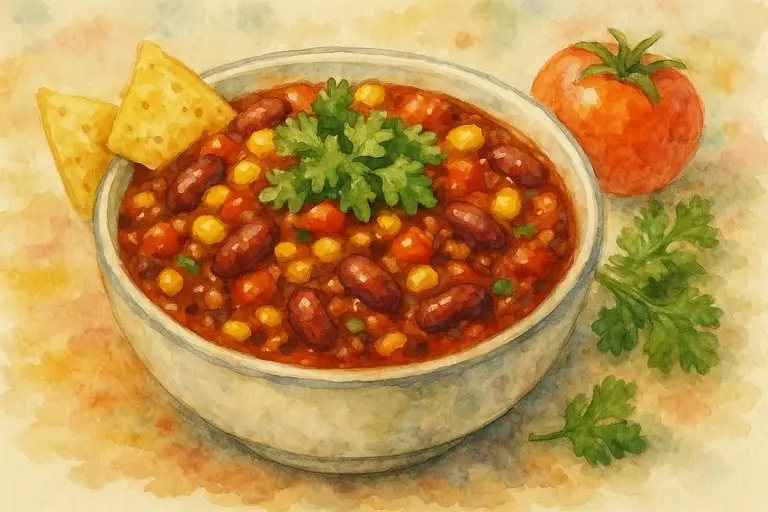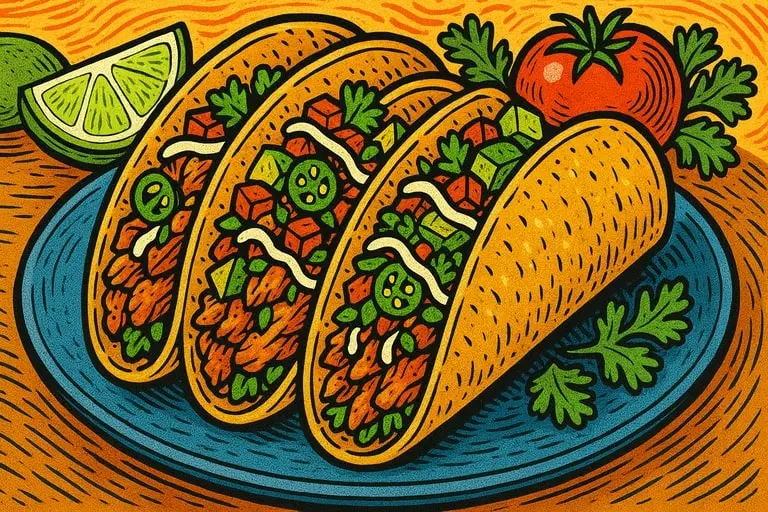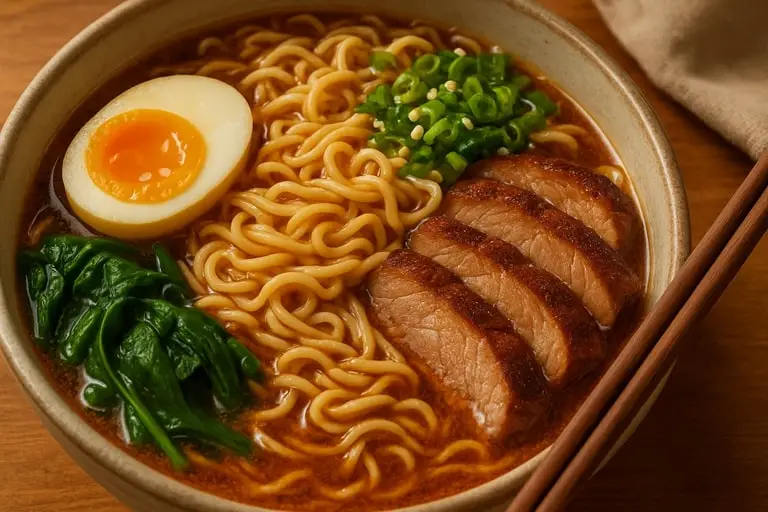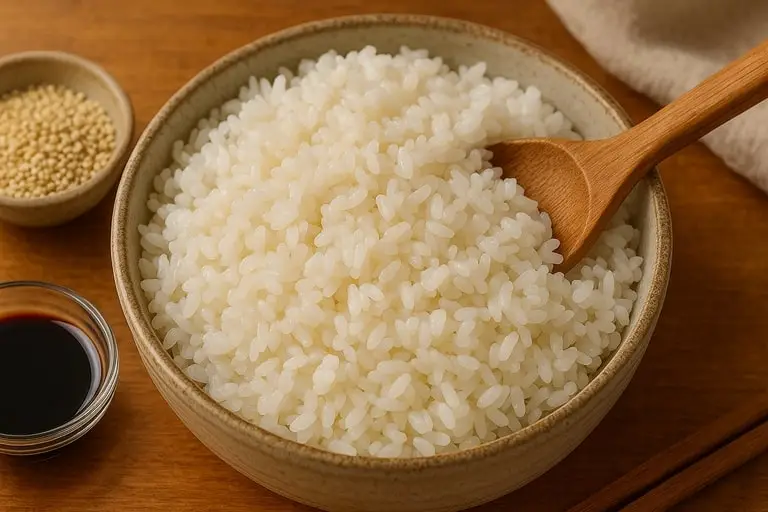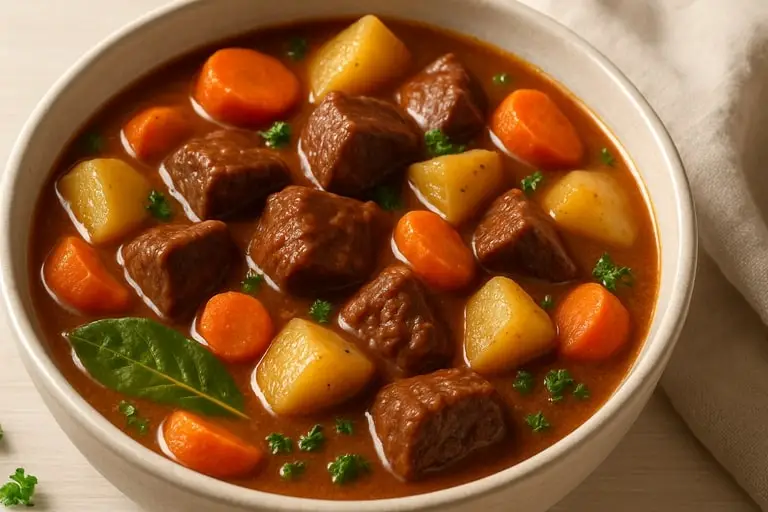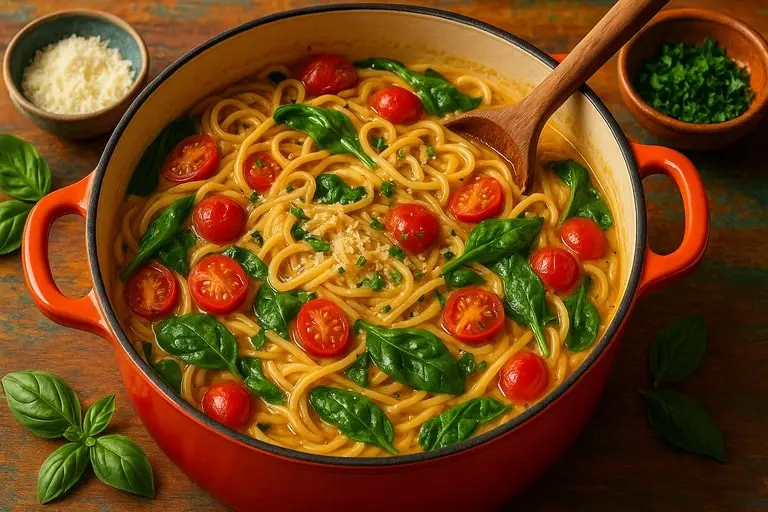The guacamole recipe has become one of the most beloved staples of Mexican cuisine, celebrated globally for its creamy texture, fresh flavor, and versatility. While it appears simple—mashed avocados seasoned with lime, salt, and other fresh ingredients—its cultural significance and culinary depth reach far beyond its role as a dip or side. Guacamole symbolizes both heritage and adaptability, a dish that connects ancient traditions with modern tables, embodying the philosophy of transforming natural ingredients into vibrant nourishment.
The origins of guacamole date back to the Aztec civilization, where avocados were cultivated and valued not only for taste but also for nutrition. The word “guacamole” derives from the Nahuatl word “ahuacamolli,” meaning avocado sauce. This early form provided sustenance while showcasing the avocado’s rich texture and unique flavor. Over centuries, guacamole evolved, integrating ingredients like lime, onion, and cilantro, reflecting both continuity and adaptation. Today, guacamole remains central to Mexican identity while achieving worldwide popularity.
Texture forms the essence of guacamole. The ripeness of avocados defines the outcome, as perfectly ripe fruit yields creamy consistency with subtle nutty flavor. Mashed gently with forks or mortars, avocados retain some chunkiness, preserving authenticity against overblended versions. The interplay of creamy avocado with crisp onion, juicy tomato, or spicy chili creates balance, reminding us that texture contributes as much as flavor.
Flavor balance distinguishes guacamole recipes. Lime juice provides brightness, salt sharpens depth, onions offer bite, and cilantro adds freshness. Jalapeños or serranos contribute heat, while tomatoes lend sweetness. Proportions vary by region or household, but the goal remains harmony: no single ingredient should dominate. This pursuit of balance reflects broader Mexican culinary philosophy, where simplicity achieves sophistication.
Culturally, guacamole embodies community. It appears at fiestas, family gatherings, and markets, served with tortillas or as accompaniment to tacos, grilled meats, or tamales. Its preparation often becomes collective, where families mash avocados and adjust seasoning together, reinforcing bonds through food. Shared from communal bowls, guacamole represents hospitality and celebration, extending beyond nourishment into ritual.
The sensory impact of guacamole elevates its role. Its vibrant green color, creamy texture, and aroma of fresh herbs and citrus engage multiple senses. The act of dipping a tortilla chip into smooth, flavorful guacamole provides tactile satisfaction, reinforcing its popularity as both appetizer and centerpiece. These sensory qualities explain why guacamole resonates across cultures, even beyond its origins.
From a nutritional perspective, guacamole embodies health as well as indulgence. Avocados supply heart-healthy monounsaturated fats, fiber, potassium, and vitamins E and C. Fresh vegetables and lime juice contribute additional nutrients, ensuring guacamole remains both delicious and wholesome. This duality—pleasure and nourishment—explains its enduring role in modern diets.
Global adaptations highlight guacamole’s versatility. In the United States, it has become synonymous with gatherings like Super Bowl parties, while in Europe it often appears as trendy café offering. Variations introduce ingredients like mango, pomegranate, or roasted corn, expanding scope while retaining identity. These adaptations prove guacamole’s universality, a dish that thrives across cultural borders.
Professional kitchens treat guacamole as both tradition and opportunity. Some chefs adhere to strict authenticity, emphasizing minimalism and balance. Others experiment with luxury ingredients—truffle oil, lobster, or artisanal salts—elevating guacamole into fine dining. This dual role proves its resilience as both humble dip and sophisticated creation, embodying flexibility within tradition.
Ultimately, the guacamole recipe represents simplicity elevated by care. It affirms that extraordinary flavor can arise from few ingredients when handled thoughtfully. Rooted in history yet adaptable to present, guacamole endures as a timeless expression of Mexican heritage and global culinary imagination.
Guacamole and Recipe Mastery
Mastering guacamole requires sensitivity to detail, where each step influences flavor, texture, and authenticity. Though deceptively simple, success depends on ingredient selection, timing, and balance. Recipe mastery transforms guacamole from casual dip into expression of culinary expertise and cultural respect.
Avocado selection defines the base. Only ripe avocados, yielding slightly under pressure, provide ideal creaminess without bitterness. Underripe fruit resists mashing and lacks flavor, while overripe avocados risk browning or mushiness. Choosing quality avocados at their peak affirms commitment to authenticity and outcome.
Preparation method further shapes guacamole. Traditionalists use molcajetes, stone mortars that release oils from garlic, chilies, or herbs, blending flavors with depth unattainable in metal bowls. Fork-mashed versions provide chunkier texture, while food processors, though convenient, risk overblending into monotony. Mastery respects technique, aligning texture with cultural tradition.
Seasoning demands balance. Salt enhances avocado’s natural richness, lime juice prevents oxidation while brightening flavor, and chilies contribute heat. Onion and cilantro add complexity, while optional tomato introduces sweetness. The key lies in restraint, ensuring avocado remains central. Overuse of ingredients risks disguising rather than highlighting the fruit’s essence.
Timing plays critical role. Guacamole tastes best freshly prepared, as avocados oxidize quickly, losing color and vibrancy. Storing with pits, covering tightly, or adding extra lime juice prolongs freshness slightly, but mastery prioritizes immediacy. Preparing guacamole just before serving ensures maximum flavor and presentation.
Customization reflects guacamole’s adaptability. Some recipes emphasize heat with jalapeños, others prioritize freshness with extra herbs, while contemporary adaptations add fruits or spices. These variations demonstrate flexibility, yet true mastery ensures balance persists. Guacamole thrives not in excess but in harmony.
Professional mastery involves presentation as well. Guacamole served tableside in molcajetes enhances experience, connecting diners with tradition. Garnishing with cilantro sprigs or chili slices emphasizes freshness. Such details elevate guacamole from dip to centerpiece, proving mastery extends beyond taste into aesthetics.
Nutritional awareness enhances recipe mastery. By moderating salt, balancing avocado’s fat with vegetable additions, or incorporating seasonal produce, guacamole becomes wholesome without losing flavor. Such adjustments affirm guacamole’s relevance in modern wellness-driven kitchens.
Cultural respect remains central. Recognizing guacamole’s heritage ensures that even creative adaptations honor origins. Professional chefs and home cooks alike demonstrate mastery not only through technical skill but through understanding of guacamole’s cultural weight as symbol of Mexican identity.
Modern innovations expand guacamole’s role. Spreads for sandwiches, toppings for grain bowls, or bases for fusion dishes demonstrate its versatility. Yet in all contexts, mastery lies in respecting avocado as star, ensuring additions enhance rather than obscure.
Ultimately, recipe mastery for guacamole reveals that excellence arises from simplicity, attentiveness, and respect. By treating ingredients thoughtfully and balancing tradition with creativity, cooks affirm guacamole’s timeless role as both cultural emblem and culinary delight.
Guacamole Recipe and Everyday Comfort
The guacamole recipe resonates most deeply as symbol of everyday comfort, embodying both nourishment and celebration. Its preparation, sharing, and enjoyment reflect values of care, connection, and pleasure that extend beyond flavor into cultural and emotional significance.
At its core, guacamole represents accessibility. Its ingredients—avocados, lime, onion, chilies, cilantro—are simple and affordable, making it staple in households across Mexico. Prepared quickly, it integrates seamlessly into daily life, accompanying meals from tacos to grilled meats. This accessibility ensures guacamole is not reserved for special occasions but remains part of everyday comfort.
The act of making guacamole fosters ritual. Families gather to mash avocados, taste seasonings, and adjust balance together. These small acts of collaboration reinforce connection, transforming preparation into shared experience. Comfort arises not only from eating but from participating in process.
Sensory qualities amplify its role as comfort food. The creamy texture soothes, the freshness of lime invigorates, and the heat of chilies excites. Visually, its vibrant green evokes vitality, while its aroma signals anticipation. These elements combine to create food that nourishes both body and spirit, satisfying cravings while uplifting mood.
Guacamole also represents generosity. Shared communally with chips or tortillas, it encourages conversation and conviviality. Its abundance allows everyone to partake, reinforcing values of hospitality and inclusivity. In this way, guacamole comforts by uniting people, transforming meals into gatherings.
Psychologically, guacamole evokes joy and reassurance. Its familiarity grounds individuals in cultural identity or memory, while its freshness symbolizes renewal. During stressful times, guacamole provides solace, proving that comfort can arise from simplicity as much as from indulgence.
Globally, guacamole’s role as comfort food adapts seamlessly. In the United States, it has become indispensable at parties, game days, and family gatherings, representing festivity as much as flavor. Abroad, its integration into diverse cuisines reflects universality: wherever avocados thrive, guacamole follows, embodying comfort across borders.
Modern lifestyles sustain guacamole’s comfort role. Prepared in minutes, it fits into busy schedules while maintaining authenticity. Even pre-packaged versions, though lacking freshness, reflect demand for comfort and convenience. Yet true comfort lies in homemade preparation, where ritual, freshness, and tradition converge.
Nutritionally, guacamole provides reassurance. Unlike many comfort foods associated with indulgence, guacamole nourishes as much as it delights. Its healthy fats, fiber, and vitamins align with wellness while satisfying cravings, proving that comfort and health need not conflict.
Professional kitchens embrace guacamole’s comfort while elevating it into refined contexts. Whether paired with artisanal chips, spread on gourmet toast, or incorporated into fusion dishes, guacamole retains identity as comfort food, reminding diners that authenticity lies in essence, not presentation.
Ultimately, the guacamole recipe embodies everyday comfort by uniting tradition, freshness, and community. Its simplicity reassures, its versatility adapts, and its symbolism endures. Through every bowl prepared and shared, guacamole affirms its timeless role as comfort food that connects, nourishes, and delights across generations and cultures.
When people think of festive gatherings and vibrant flavors, one of the first things that comes to mind is the variety of dips that trace their origins to Mexico. These creations are far more than simple accompaniments; they are integral parts of the dining experience, offering bursts of taste that enhance everything around them.
Whether creamy, chunky, spicy, or tangy, they serve as both appetizers and complements to larger meals, embodying the richness and diversity of Mexican culinary heritage. Their role in meals is not secondary but central, as they act as bridges between textures, flavors, and conversations.
The history of these dips stretches back centuries, rooted in the agricultural traditions of Mesoamerican civilizations. Long before European influence, indigenous peoples cultivated avocados, tomatoes, beans, corn, and chilies, combining them in ways that laid the foundation for the dips we recognize today.
The arrival of Spanish colonizers introduced new ingredients such as dairy products and additional spices, expanding the possibilities. Over time, recipes evolved, blending the old and the new until they became embedded in Mexican identity. These dips are therefore not merely foods but symbols of cultural fusion and resilience.
At the heart of these preparations lies a philosophy of balance. They often pair creamy textures with sharp acidity, heat with coolness, and richness with freshness. This balance is achieved through careful combinations: lime juice to cut through fat, chilies to awaken the palate, cilantro to brighten, or salt to deepen. Each dip is a small but powerful expression of Mexican cooking’s core principles, where no single element dominates but instead contributes to harmony. This is why they are so addictive — each bite feels complete, layered, and satisfying, despite the simplicity of the preparation.
Among the most iconic is the avocado-based creation beloved worldwide. Its creamy consistency and subtle, nutty flavor form a base for endless variations. Sometimes it remains simple, with only salt and lime to highlight the avocado, while at other times it becomes more complex, enriched with onions, chilies, and herbs.
This dip exemplifies Mexico’s ability to elevate a single ingredient into something extraordinary, demonstrating how restraint and respect for natural flavors can create universal appeal. It is no surprise that this preparation has become a global ambassador for Mexican cuisine.
Tomato-based salsas represent another cornerstone. Bright, tangy, and versatile, they range from raw preparations that burst with freshness to roasted versions that carry smokiness and depth. Tomatoes combine with onions, garlic, chilies, and herbs in countless proportions, each region and household adjusting according to preference.
These dips serve not only as companions to tortilla chips but also as vital components of tacos, grilled meats, and breakfasts. Their adaptability ensures they remain omnipresent, a constant in the rhythm of everyday life as well as in celebrations.
Bean-based dips highlight another dimension of Mexico’s agricultural bounty. Black beans or pinto beans, mashed and seasoned, create spreads that are hearty, earthy, and deeply satisfying. When combined with spices, cheese, or chilies, they transform into layers of flavor that sustain as well as delight. These dips reveal how everyday staples can be turned into culinary art, a reflection of resourcefulness and creativity. They also serve as reminders of the communal nature of food, as pots of beans have always been central to family meals.
Cheese-based preparations illustrate the influence of Spanish colonization and later adaptations. Melted or blended with chilies, tomatoes, and spices, they create indulgent dips that are both comforting and festive.
They often appear at gatherings, where their richness encourages sharing and celebration. Their creamy textures pair beautifully with the crunch of tortillas or vegetables, making them universally appealing. These dips highlight the fusion of indigenous and European elements, showing how Mexican cuisine thrives on evolution without losing its essence.
Culturally, these dips are inseparable from gatherings. They appear at birthdays, weddings, holidays, and casual evenings alike, embodying the joy of togetherness. Their very nature — designed for scooping, dipping, and sharing — fosters interaction. To gather around a bowl of salsa or avocado spread is to participate in a ritual of generosity and community, where food acts as the centerpiece of connection.
They remind us that meals are not only about sustenance but also about relationships, laughter, and shared experience.
The sensory qualities of these dips are part of their allure. The vivid colors — bright greens, deep reds, golden yellows — appeal to the eye before the first bite. Aromas of roasted chilies, fresh herbs, and tangy lime stimulate the appetite, while the flavors themselves deliver contrast and depth. The textures vary from silky smooth to rustic and chunky, ensuring that each scoop offers something new. Eating them is never monotonous; it is a play of senses that captures attention and leaves lasting impressions.
Globally, Mexican dips have achieved remarkable popularity. Restaurants and households far from Mexico serve them as staples, often introducing people to the cuisine for the first time. Yet their global spread also sparks questions of authenticity, as recipes adapt to local tastes and ingredients. Some versions become simplified or altered, yet their essence remains recognizable.
Their resilience lies in their adaptability: whether made traditionally in a Mexican kitchen or recreated abroad with substitutions, they still deliver the spirit of the original.
Nutritionally, these dips also offer value. Avocado brings healthy fats and vitamins, beans contribute protein and fiber, tomatoes provide antioxidants, and chilies stimulate metabolism. Unlike many processed snacks, these are whole-food based, offering nourishment alongside indulgence.
This dual role — both delicious and beneficial — ensures their place in modern diets, where people seek balance between health and pleasure. They represent how traditional foods can align with contemporary nutritional values without losing authenticity.
Ultimately, Mexican dips endure because they capture the essence of what makes food meaningful: simplicity elevated through creativity, tradition preserved through adaptability, and community expressed through sharing. They are not confined to one role but serve as appetizers, accompaniments, and even main attractions. Their colors, flavors, and textures embody the vibrancy of Mexico itself, reminding us that food is celebration, identity, and love. In every scoop lies a story of heritage and hospitality, proving that even the smallest dishes can carry the deepest cultural weight.


